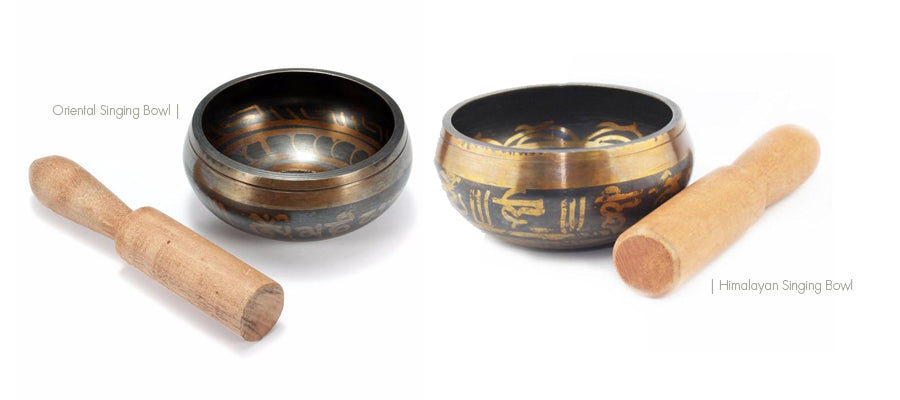A singing bowl is a ritual object used in the Himalayan region mostly Tibet and Nepal since ancient times. It produces sounds which invoke a deep state of relaxation which naturally assists one in entering into meditation, the ultimate goal being enlightenment. They are a quintessential aid to meditation and can be found on private Buddhist altars, and in temples, monasteries and meditation halls throughout the world.
TELLING YOU MORE...
Surprisingly, singing bowls are not just limited to meditation but are used for a number of purposes: music therapy, yoga, sound healing, religious services, performances, and even for personal enjoyment. By striking the rim with a padded mallet, the ‘standing bell’ (as it’s known) creates a sound that has three harmonics- the first is called the ‘fundamental frequency’ while the other two are termed as the second and third harmonic.
One can also derive a continuous ‘singing’ sound by rubbing the rim with plastic, wooden, or leather wrapped mallet. The harmonies produced by these bowls, whether antique or new, are so unique and powerful that they have been used all over the world for countless generations.
10 INTERESTING FACTS
Here are 10 interesting facts about singing bowls that will give you more information about this traditional instrument:
Fact #1:
It shouldn’t be surprising that they are used for meditation given that its sound causes ‘clarity of mind’…in fact, many experiments done by neurologists show conclusive evidence that brain waves change when listening to their calming sounds.
Fact #2:
The sounds that are created depend on the type of metal that is used to create them. Copper has one of the purest sounds, producing an even ‘ringing’ throughout.
Fact #3:
The metals that are used to fabricate these singing bowls differ from religion-to-religion. As for singing bowls created for Buddhists, there are up to 12 different metals traditionally used - with the primary ingredient being pure copper. Some of the other religions use more exotic materials, including gold and silver.
Fact #4:
As for its origins, singing bowls date as far back as 3000 years, yet there isn’t any traditional literature that covers the subject of singing bowls in any detail. To even find out the traditional mixture of metals used to create them took a lot of scientific examination!
Fact #5:
Sound Massage uses singing bowls that are placed on the person’s body and tapped gently with a felt mallet. The sounds produced help the person deeply relax while creating a feeling of well-being.
Fact #6:
Crystal singing bowls are preferred over their metal counterparts because they can produce higher pitched sounds. These higher pitches have a different effect on the nervous system.
Fact #7:
Traditional craftsmen produce new singing bowls by a method known as ‘hand hammering’- a practice that involves melding pieces completely by hand. Another method which is also used involves sand casting and machine lathing.
Fact #8:
There are a number of factors that determine the pitch of the sound created by these singing bowls such as thickness, size, and weight of the singing bowl. But the pitch can also be controlled by factors such as the force of the tap, the point on the rim that is struck, as well as hardness of the tap.
Fact #9:
The sound produced by a singing bowl is said to evoke the Kundalini chakra and stimulate deeper feelings of spirituality.
Fact #10:
Their origins can be found in Northern India and Tibet, but they continue to remain a mystery because very little has been discovered about how they were actually created and who began using them in spiritual practices.
GET YOUR OWN SINGING BOWL HERE

